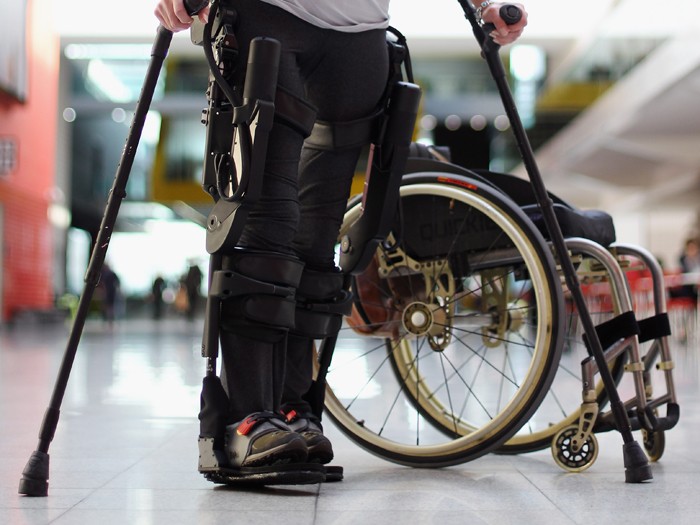Injury Prevention
The Next Answer to MSDs: Wearable Exoskeletons

Musculoskeletal disorders comprise nearly one-third of lost time workplace injuries and illnesses. The cost of injuries from overexertion involving an outside source was estimated to be $15.1 billion in 2012, according to Liberty Mutual Insurance Company.
Back belts and lifting belts are personal protective devices that have been used to reduce back injury risks during lifting. Robotic-like suits used mainly for rehabilitation are now becoming a reality in the effort to prevent injuries, according to a federal agency.
“According to a recent market research report, in 2016 the medical/rehabilitation applications will likely comprise 97 percent of the total market for wearable exoskeletons compared with only 3 percent for work-related/industrial applications.
This report projects that within five years the industrial market share will equal that of the medical/rehabilitation,” according to the National Institute for Occupational Safety and Health. “Market forecasts from this report suggest growth in the industrial market from $2.9 million in 2016 to $1.12 billion in 2021 — an average growth of 229 percent per year.”
The devices are now being used in the shipbuilding industry. Experts project increasing market share for the exoskeletons in the construction, warehousing, and manufacturing industries.
The devices are described as “a wearable, external mechanical structure that enhances the power of a person,” NIOSH said. “Exoskeletons can be classified as ‘active’ or ‘passive.’ An active exoskeleton comprises one or more actuators that augments the human’s power and helps in actuating the human joints. … A strictly passive system does not use any type of actuator, but rather uses materials, springs or dampers with the ability to store energy harvested by human motion and to use this as required to support a posture or a motion.”
“Market forecasts from this report suggest growth in the industrial market from $2.9 million in 2016 to $1.12 billion in 2021 — an average growth of 229 percent per year.” — National Institute for Occupational Safety and Health
There is some evidence that the devices can help reduce musculoskeletal loads. NIOSH pointed to a recent literature review of the issue.
“The majority of these studies evaluated these effects in a laboratory setting and several studies did report decreased back muscle activity and compressive forces in the lower spine,” the post said. “Because most of the studies have been in laboratory environments, more information on worker acceptance and adoption of the devices and long-term use in real work environments is needed.”
The preferred method of reducing exposure to musculoskeletal injury risk is to redesign work such as lowering the weight of tools or materials or changing the layout of the work space to avoid putting workers into certain postures that make them more at risk. However, personal protective equipment is often used when such controls are unavailable.
The government is trying to determine the effectiveness of exoskeletons in reducing injury risks to workers. A variety of programs are underway in the Department of Defense and other entities. NIOSH is seeking input from those with experience in using the devices for safety.
“In what industries and specific occupations have these devices been successful and in what industries/occupations have they not?” the institute asked. “Industry experience can reveal issues and barriers to worker acceptance that are not evident in a controlled laboratory environment.”










